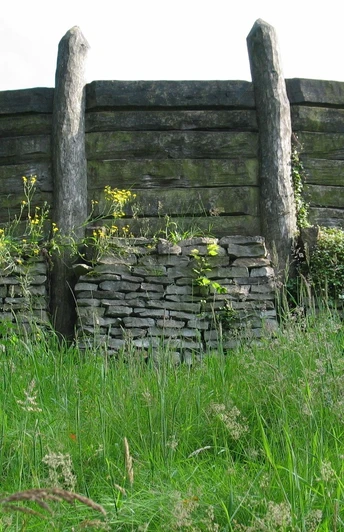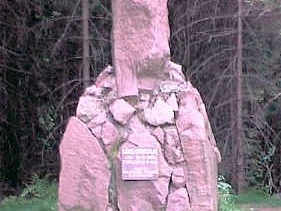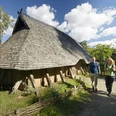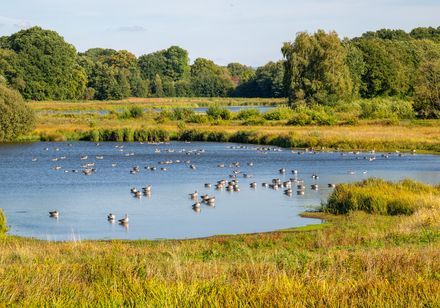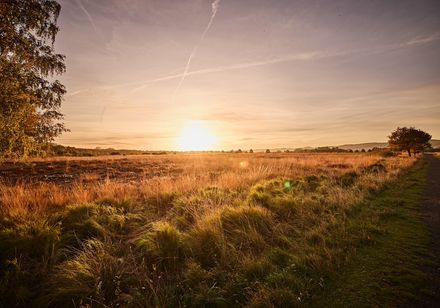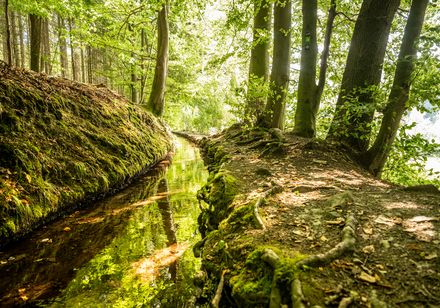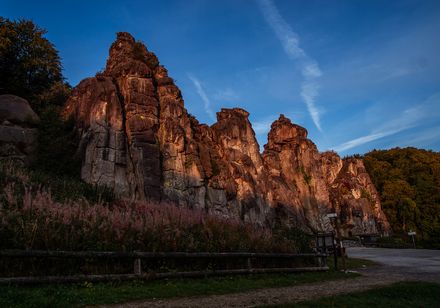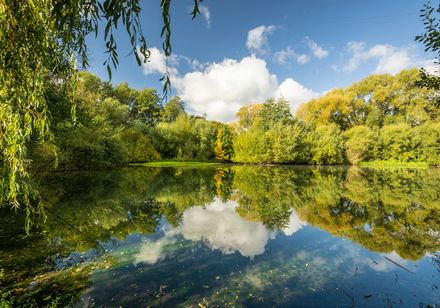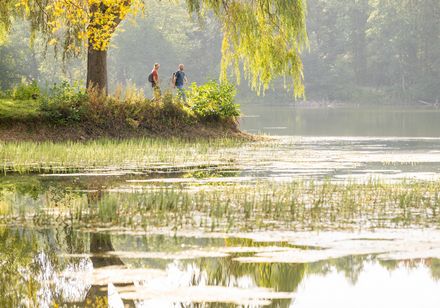- 1:15 h
- 3.56 km
- 129 m
- 61 m
- 210 m
- 336 m
- 126 m
- Start: Archaeological open-air museum - Oerlinghausen
- Destination: "Wallburg Tönsberg"
Waypoints
Start
Good to know
Best to visit
suitable
Depends on weather
Directions
Get the information flyer "Wallburg Tönsberg" at the Archaeological Open-Air Museum or print out the map here, as some path markings are missing.
Equipment
Sturdy shoes and clothing suitable for the weather
Binoculars
Directions & Parking facilities
Via A33 - Exit 22, Schloß Holte-Stukenbrock - turn right towards Oerlinghausen L751 - after approx. 5.6 km (after tunnel) turn left onto L751/exit towards Oerlinghausen - turn left onto L967/Zeppelinstr. - after approx. 100 m at traffic lights turn right onto "Robert-Koch-Str." towards glider airfield - after approx. 600 m turn left onto "Welschenweg" - turn left onto "Triftweg" - after approx. 100 m parking lot at the museum Via A2 - exit 27, Bielefeld Zentrum - B66 towards Oerlinghausen - exit towards Oerlinghausen - after approx. 4.7 km on L751/exit right towards Oerlinghausen - turn left onto Zeppelinstr. - after approx. 400 m at traffic lights turn right onto "Robert-Koch-Str." towards glider airfield - after approx. 600 m turn left onto "Welschenweg" - turn left onto "Triftweg" - after approx. 100 m parking lot at the museum
Oerlinghausen - Archaeological Open-Air Museum, Am Barkhauser Berge 2-6
Line 34 stop Kastanienkrug > around the Kastanienkrug > street "Welschenweg" > right street "Triftweg" after approx. 100 m Museum
Line 39 stop Friedrichstr. > towards Kastanienkrug > street "Welschenweg" > right street "Triftweg" after approx. 100 m Museum
Additional information
www.oerlinghausen.de
www.naturpark-teutoburgerwald.de
Book tip: Tönsberg bei Oerlinghausen - Lippische Kulturlandschaften Heft 7, 1st edition 2007 ISBN 978-3926311-49-8A reconstruction of the Tönsberg fortification can be seen in the Lippisches Landesmuseum in Detmold.
License (master data)
Author´s Tip / Recommendation of the author
A visit to the Oerlinghausen Open-Air Archaeological Museum is highly recommended
Safety guidelines
From the open-air museum in the direction of the archaeological hiking trail, there is a steep incline of approx. 100 meters in altitude over a distance of 400 meters - partly a trail
Nature reserve - please do not leave the designated paths!
